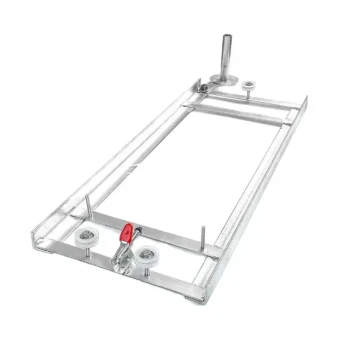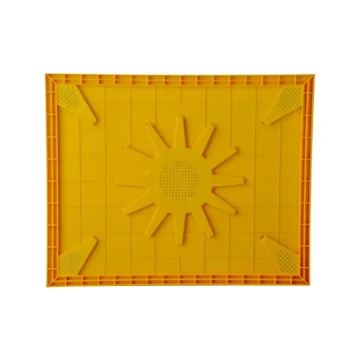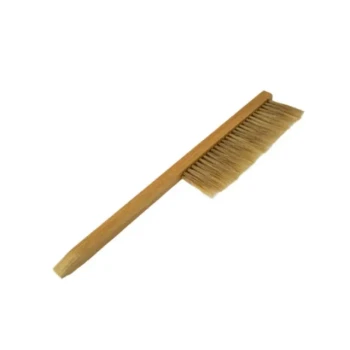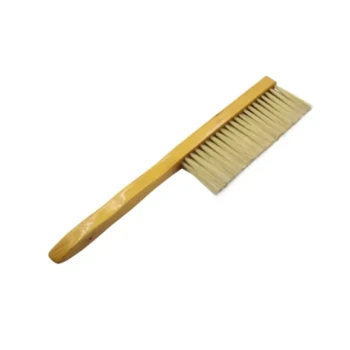In short, yes. A screened bottom board helps with Varroa mite control by providing a one-way exit for mites that fall off of bees. As mites become dislodged during the colony's natural grooming activities, they drop through the mesh screen and out of the hive, unable to climb back up and re-infest other bees.
The true value of a screened bottom board is not as a passive pest control device, but as an essential monitoring tool. It allows you to accurately assess the Varroa mite level in your hive, which is the most critical step in effective pest management.
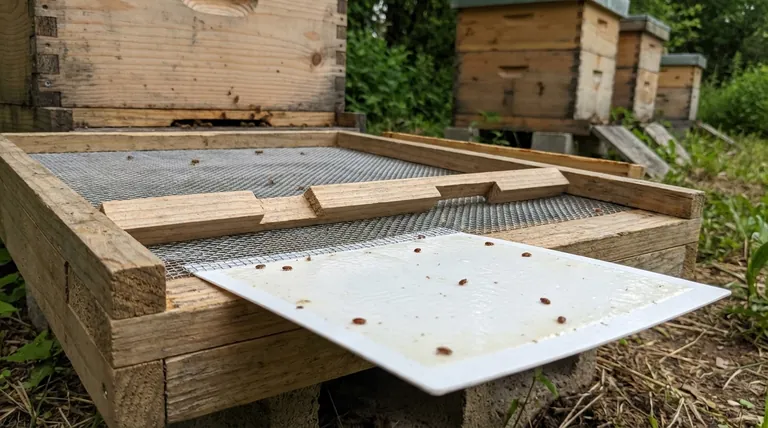
The Core Mechanism: How Screened Bottoms Work
A screened bottom board replaces the standard solid wood floor of a beehive with a sturdy section of #8 hardware cloth or wire mesh. This simple change has a direct impact on the Varroa mite lifecycle within the hive.
Passive Mite Drop
Varroa mites spend part of their lives on the bodies of adult bees. During normal movement and grooming, some of these mites lose their grip and fall.
With a solid bottom board, a fallen mite can simply wait for a new bee to walk by and climb aboard. With a screened bottom, the mite falls completely out of the hive.
A One-Way Exit
Once a mite falls through the screen, its chances of returning to the colony are virtually zero. This creates a small but constant "mite drain," passively reducing the overall pest population over time.
Supporting Grooming Behavior
Certain mite treatments, like a sugar dusting, work by encouraging bees to groom themselves and each other more intensely. A screened bottom board makes these efforts more effective by ensuring any dislodged mites are permanently removed from the hive environment.
From Passive Control to Active Monitoring
While the passive mite drop is helpful, it is not powerful enough to control a significant infestation on its own. The primary strategic advantage of a screened bottom board is its role in monitoring.
The Power of the Sticky Board
By sliding a white, sticky board (often a piece of corrugated plastic with a light coating of oil or petroleum jelly) under the screen, you can catch and count every mite that falls. This is known as a "mite drop count."
Performing a 24-hour or 72-hour mite drop count gives you a reliable data point. This count helps you estimate the total mite population within the hive without having to perform a more disruptive alcohol wash or sugar roll.
Informing Treatment Decisions
Knowing your hive's mite load is the cornerstone of Integrated Pest Management (IPM). Counting the mites on a sticky board allows you to move from guessing to knowing.
This data tells you precisely when mite levels are crossing a dangerous threshold, empowering you to intervene with a treatment before the colony's health is compromised.
Understanding the Trade-offs and Limitations
While a valuable tool, a screened bottom board is not a magic bullet and comes with considerations every beekeeper must understand.
It Is Not a Standalone Solution
The most common mistake is assuming a screened bottom board is a complete Varroa control method. It is not. The passive mite drop is too low to protect a colony from the mite's exponential reproductive rate.
Relying solely on a screened bottom board will almost certainly lead to colony losses. It is a component of a larger strategy, not the strategy itself.
Impact on Hive Climate
In colder climates, a screened bottom provides significant ventilation. While this can be beneficial for reducing moisture in the summer, it can make it harder for the bees to maintain their cluster temperature in the winter.
Many beekeepers who use screened bottoms slide an insert or "closure board" into place during the winter to seal the hive and conserve heat.
Making the Right Choice for Your Apiary
A screened bottom board is a tool, and its value depends on how you use it.
- If your primary focus is minor, passive reduction: A screened bottom board will provide a small, continuous benefit by removing a fraction of the mite population with no extra effort.
- If your primary focus is effective Varroa management: Use the screened bottom board with a removable sticky board as your primary tool for monitoring mite levels to know precisely when you need to treat.
- If your primary focus is a complete IPM strategy: Combine the monitoring data from your sticky board with other techniques and timely, data-driven treatments to keep mite populations safely under control.
Ultimately, the screened bottom board's greatest strength is the information it provides, empowering you to make strategic decisions to protect your colony's health.
Summary Table:
| Function | Key Benefit | Key Limitation |
|---|---|---|
| Passive Mite Drop | Creates a one-way exit for dislodged mites, providing minor population reduction. | Not a standalone control method; cannot handle significant infestations alone. |
| Active Monitoring | Enables accurate mite drop counts with a sticky board to inform data-driven treatment decisions. | Requires beekeeper action to insert and count sticky boards. |
| Hive Ventilation | Improves air circulation, which helps reduce moisture in warmer months. | Can challenge bees' ability to maintain cluster heat in colder climates without a winter insert. |
Ready to implement a data-driven strategy for varroa mite control?
For commercial apiaries and beekeeping equipment distributors, having the right tools is the foundation of effective hive management. HONESTBEE supplies durable, high-quality screened bottom boards and other essential beekeeping supplies through our wholesale-focused operations.
Let us help you build a more resilient and productive apiary. Contact HONESTBEE today to discuss your equipment needs and discover how our products can support your integrated pest management plan.
Visual Guide
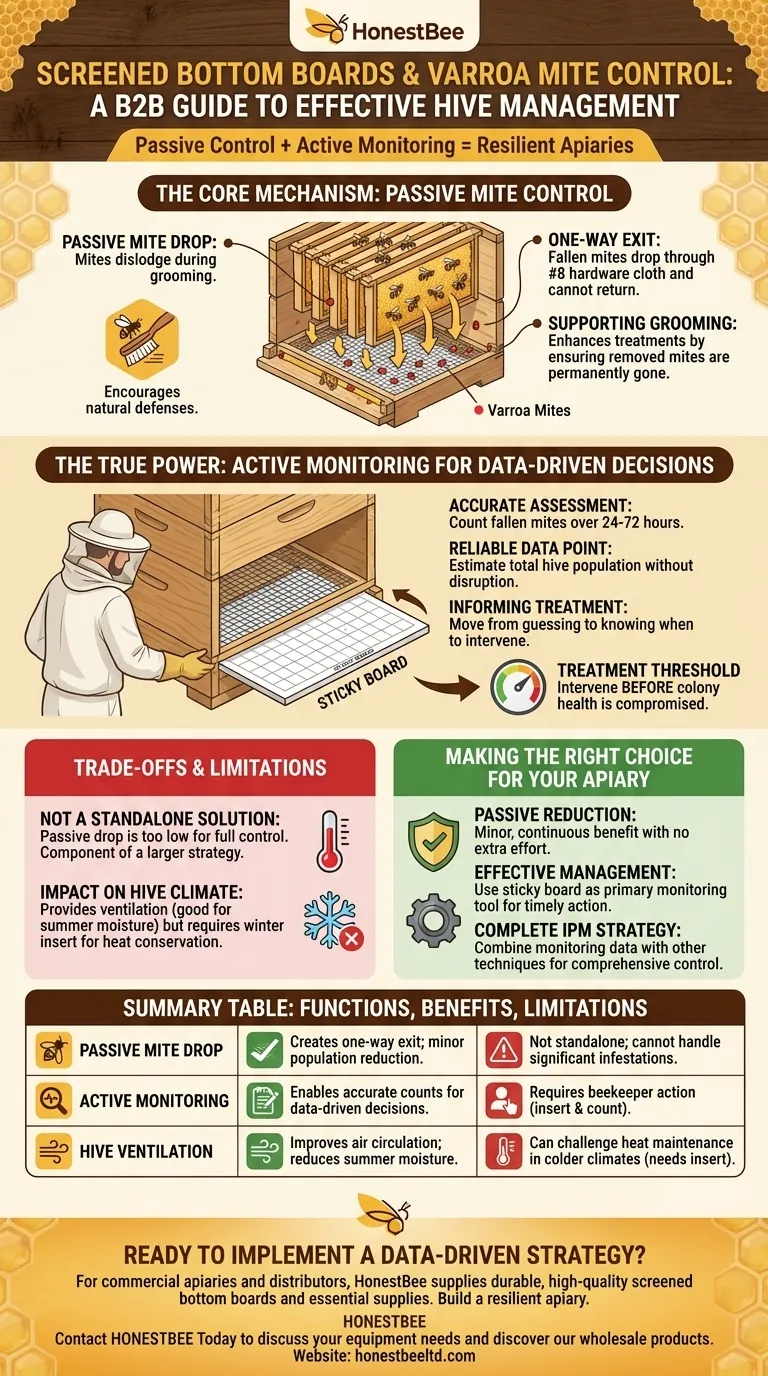
Related Products
- Langstroth Screen Bottom Board for Beekeeping Wholesale
- Australian Pine Wood Langstroth Screen Bottom Board for Wholesale
- HONESTBEE Wooden Bee Escape Board with Triangle Mesh Design for Beekeeping
- Black Plastic Beetle Barn Hive Beetle Trap for Beehives
- HONESTBEE Durable Frame Wiring Board with Integrated Tensioner
People Also Ask
- What are some considerations when choosing between solid and screened bottom boards? Optimize Hive Health & Pest Control
- What are the benefits of using a screened bottom board in warm or humid climates? Boost Hive Health & Control Pests
- What are the advantages of a screened bottom board? Boost Hive Health with Superior Ventilation & Pest Control
- What are the benefits of using a screened bottom board for beehives? Improve Ventilation & Mite Control
- How should the screened bottom board be used throughout the year? A Guide for Healthy Hives





